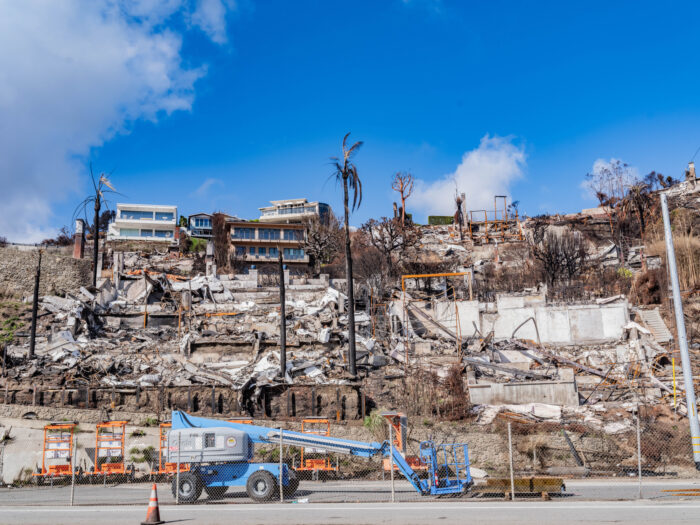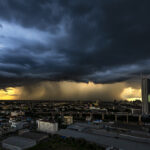California Wildfires Drive $53 Billion in Q1 2025 Insured Disaster Losses

Economic losses from natural disasters in Q1 2025 reached $83 billion globally, and insured losses are projected to reach $53 billion in the quarter, with California wildfires the main driver behind both figures, according to an analysis of global catastrophes by Aon.
The economic impact of natural disasters in the first quarter of 2025 significantly exceeded historical averages, with total economic losses 36% higher than the 21st-century mean of $61 billion. Insured losses are more than triple the 21st-century average of $17 billion, marking the second-highest Q1 figure on record after 2011, according to the report.
The Palisades and Eaton Fires in California emerged as the costliest events worldwide, collectively accounting for $52.5 billion in economic losses and $37.5 billion in insured losses, which accounted for roughly 71% of global insured disaster costs, Aon reported. The devastating wildfires damaged or destroyed more than 18,000 structures and rank among the costliest wildfires in global history.
The U.S. alone experienced nearly $71 billion in economic losses during Q1, the highest figure since the 1994 Northridge earthquake and substantially above the Q1 average of $12 billion since 2000.
In addition to the fires, there were six other U.S. natural disaster events in Q1, including two outbreaks of severe convective storms, that each cost at least $1 billion in insured losses, according to Aon.
Regional Impacts Reveal Varying Vulnerability Patterns
The California wildfires’ unprecedented impact stemmed from a perfect storm of conditions. Igniting on January 7, both fires spread rapidly due to Santa Ana winds with gusts exceeding 55 mph, long-term drought, and challenging terrain, the report noted. Within just 24 hours, the Palisades Fire burned more than 11,000 acres, ultimately growing to 23,000 acres before containment.
Outside the U.S., the most devastating event was a magnitude-7.7 earthquake near Mandalay, Myanmar, on March 28, which claimed at least 5,300 lives – representing 88% of global disaster fatalities in Q1. The quake caused extensive damage in Myanmar and neighboring Thailand, where a high-rise collapse in Bangkok resulted in 29 deaths.
The global insurance protection gap — the difference between economic and insured losses — reached a record low of 36% for Q1, compared to the historical average of 47%, Aon reported. This unusually narrow gap reflects the concentration of losses in the United States, where insurance penetration remains relatively high compared to other regions.
Forecasting Advances Show Promise Amid Growing Challenges
Weather forecasting played a crucial role in mitigating potential losses from several Q1 disasters, according to the report. A massive U.S. severe convective storm outbreak of March 14-16, which caused $6 billion in economic losses, was accurately predicted up to six days in advance. The National Weather Service and Storm Prediction Center issued a rare “high” risk warning a day before the event – only the third time in the agency’s history for such an advance warning, Aon noted.
Similarly, Europe’s Windstorm Éowyn (also called Gilles), which became Ireland’s costliest windstorm on record with an estimated $335 million in insurance payouts, was consistently predicted days in advance by major forecasting models.
However, other regions faced rare and less predictable events. Australia experienced Cyclone Alfred in early March, the first tropical cyclone to approach Brisbane since 1974, resulting in nearly 95,000 insurance claims. Meanwhile, South Korea battled devastating wildfires that caused 31 fatalities and destroyed over 7,700 structures, with economic losses estimated at approximately $1 billion.
Obtain the full report here. &










